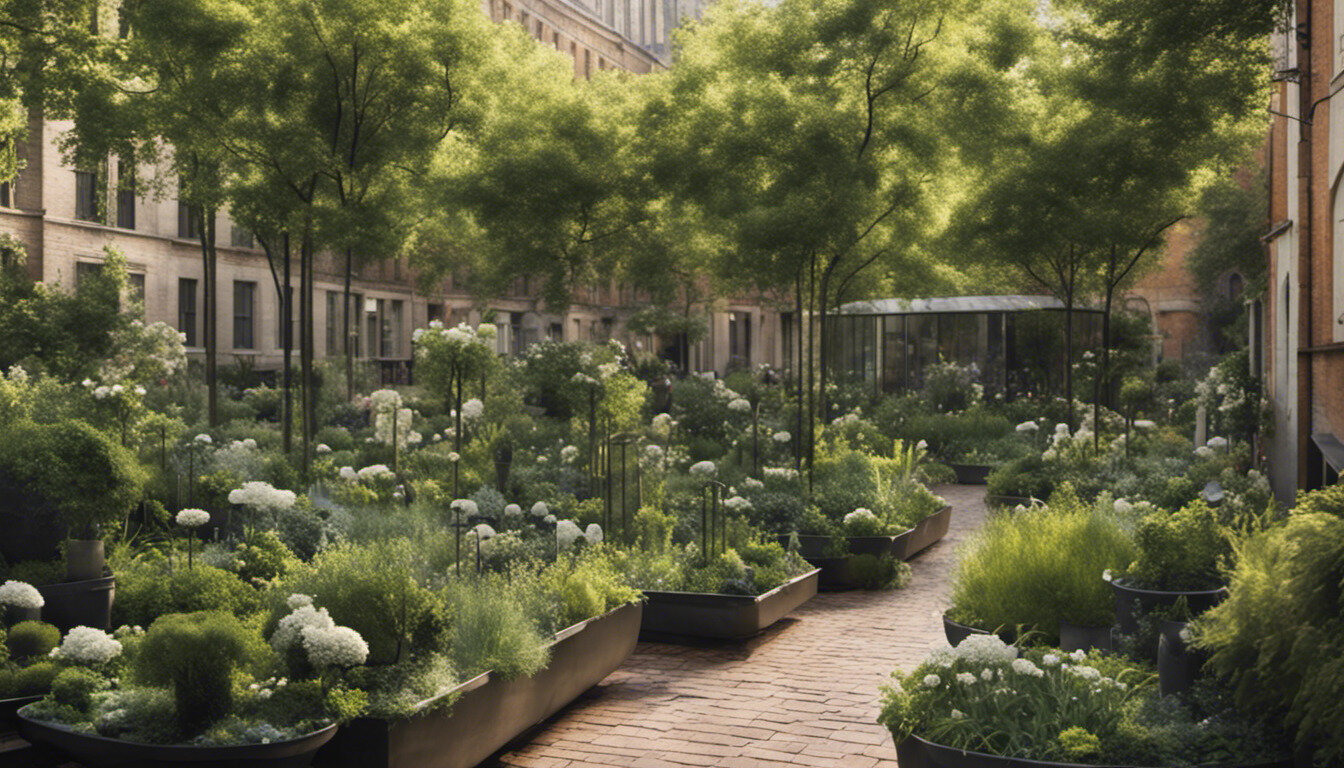The Greatest Guide To City Blooming
The Greatest Guide To City Blooming
Blog Article
6 Easy Facts About City Blooming Shown
Table of ContentsThe Basic Principles Of City Blooming The Ultimate Guide To City BloomingThe Ultimate Guide To City BloomingCity Blooming Fundamentals ExplainedThe Buzz on City Blooming
Fascinated in growing food for sale in the City of Chicago? Below is a list of regularly asked concerns pertaining to the policies and regulations that farmers ought to consider when preparing an urban farming project.
The zoning change does not modify any type of other codes taking care of composting, building licenses, buying or leasing City had property, company licenses or ecological contamination. There are existing codes that regulate these issues and they continue to be in full result and may be appropriate to your job. Community yards are commonly owned or handled by public entities, civic companies or community-based organizations and kept by volunteers.
Urban ranches expand food that is meant to be offered, either on a not-for-profit or for-profit basis. Due to their business purpose, urban ranches require an organization certificate.
All about City Blooming
The amount of garden compost material can not exceed 25 cubic backyards at any type of given time according to the criteria in 7-28-715 of the City's Municipal Code. Because the dirt at the majority of brand-new garden sites needs changing, compost, soil, wood chips, or various other materials can be obtained to create or improve the growing area.

If a structure permit is called for then the hoophouse will certainly be taken into consideration an accessory building. You can figure out even more about the building permit requirements by contacting the Division of Buildings. The 25,000-square-foot dimension limit is planned to avoid a solitary community garden from controling a provided block or interfering with the block's existing domestic or commercial personality.
The restriction does not apply to gardens located in Public Open Room (POS) areas. Can there be even more than one neighborhood yard that is 25,000 square feet on a solitary block? Secure fencing is not needed, nevertheless, yards that have huge parking locations may be needed to mount fencing or other landscaping attributes.
The 4-Minute Rule for City Blooming
B1 & B2 areas call for that all business use activities be conducted inside. Is fence needed for city ranches? Fencings may be needed, along with landscaping and screening, for particular car park areas and exterior work or storage space locations depending on place and the specific task taking location.
Yes. Urban farms need structure licenses and zoning approvals prior to building. Other kinds of city testimonial might be called for relying on certain frameworks, activities, size, landscape design, licensing, public heath and stormwater administration issues. A number of these demands are determined in the project layout or permitting procedure, nonetheless, the applicant might be accountable to individually identify particular licenses or permits that might be needed.
Yes. The type of license is figured out by what is happening at the site. The Division of Company Matters and Consumer Protection can help establish the certain sort of business permit that's needed. Yes. Off road parking is needed for the majority of industrial tasks in Chicago. The called for number of garage is based on the number of staff members working on website and not the square footage of the growing space.
The Facts About City Blooming Uncovered

An urban ranch can sell garden compost product generated on site, nevertheless, the operation must comply with the policies in 7-28-715 of the Chicago Municipal Code. Aquaponic systems are permitted inside on city farms in numerous zoning districts.
Up to five hives or swarms of honey may be maintained as an accessory usage. However, beekeepers must sign up with the Illinois Department of Agriculture. For even more information regarding the recommended zoning modification you may get in touch with the Division of Housing and Economic Development, Bureau of Preparation and Zoning at 312.744.8563.
Farming in cities and metropolitan areas A city farm in Chicago. Urban agriculture refers to numerous practices of growing. https://www.behance.net/danielnold, processing, and dispersing food in urban locations. The term likewise puts on the area tasks of animal husbandry, aquaculture, beekeeping, and gardening in a metropolitan context. Urban farming is differentiated from peri-urban agriculture, which happens in backwoods beside residential areas.
Some Known Incorrect Statements About City Blooming
, who seek to create social networks started on a shared principles of nature and neighborhood holism. These networks can develop by official site means of formal institutional support, becoming integrated into regional community preparation as a "shift town" movement for sustainable metropolitan growth.
Some of the first proof of city farming comes from Mesopotamia.
Report this page